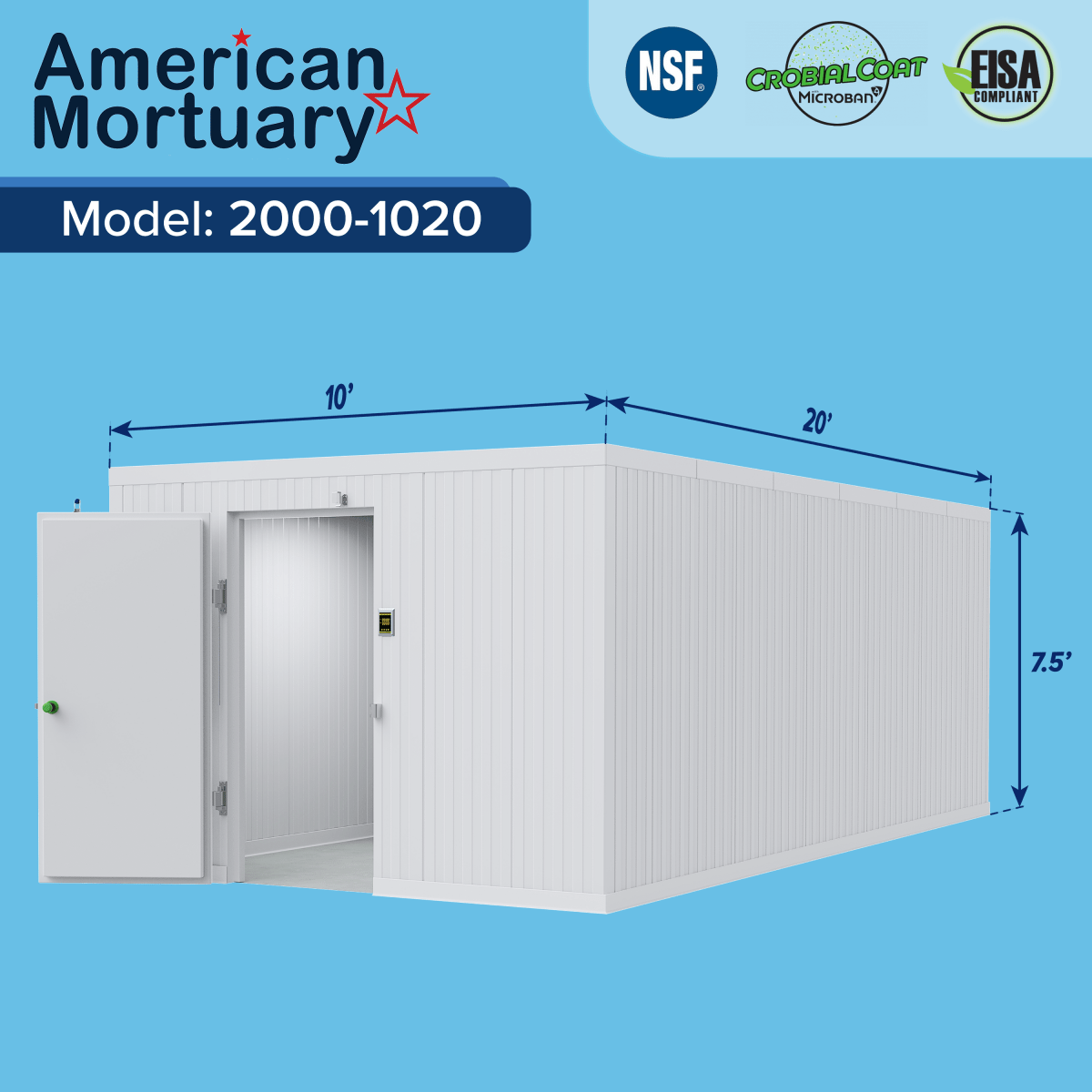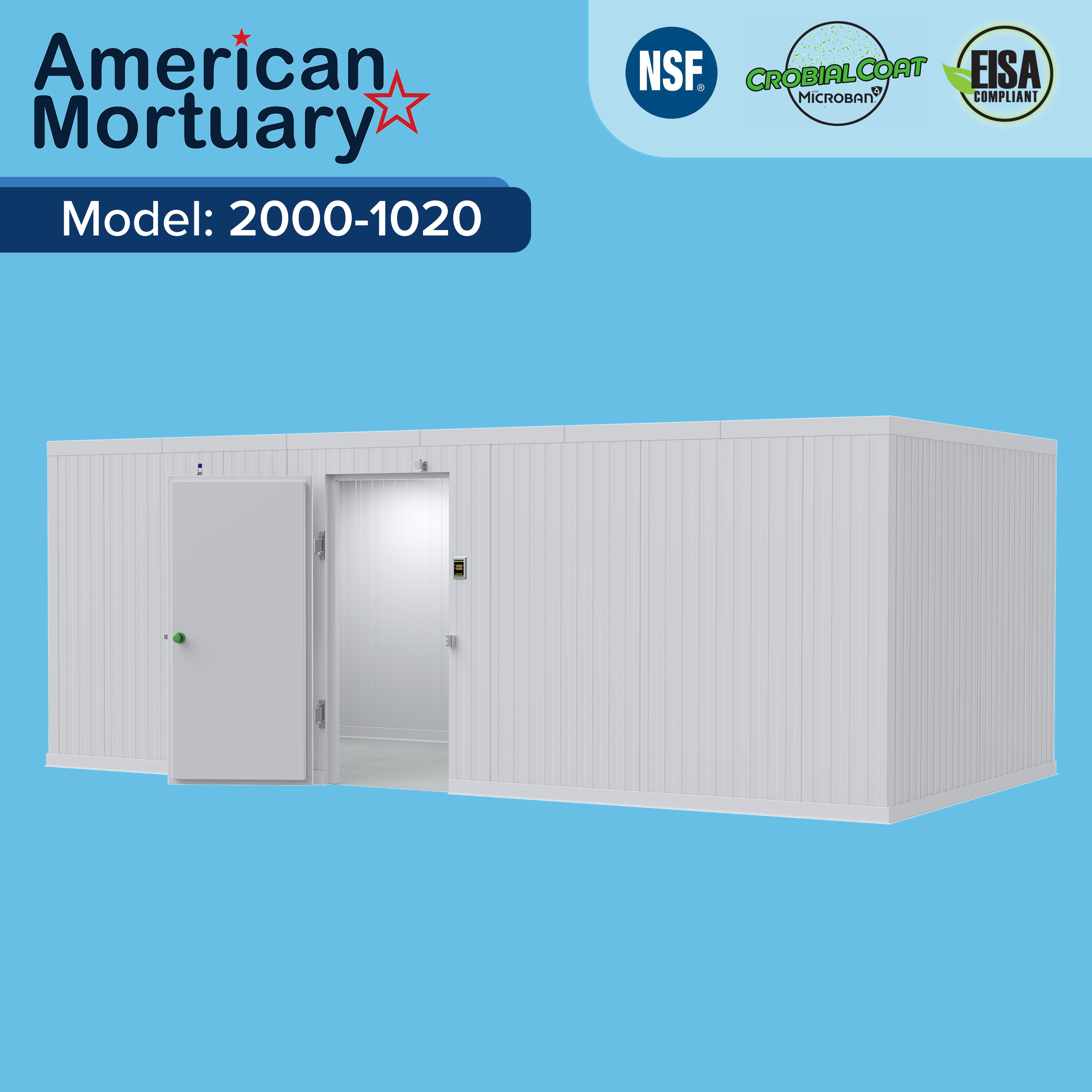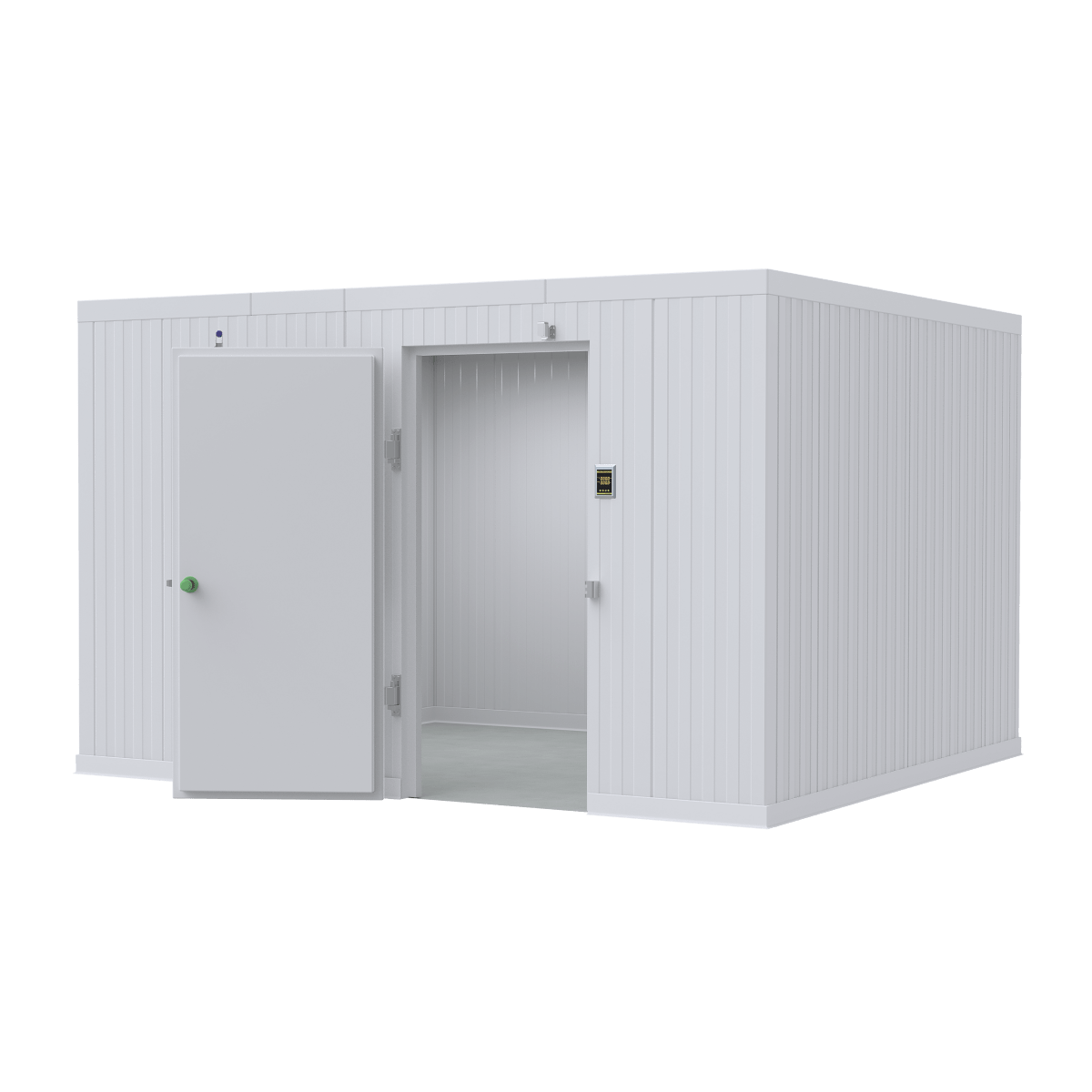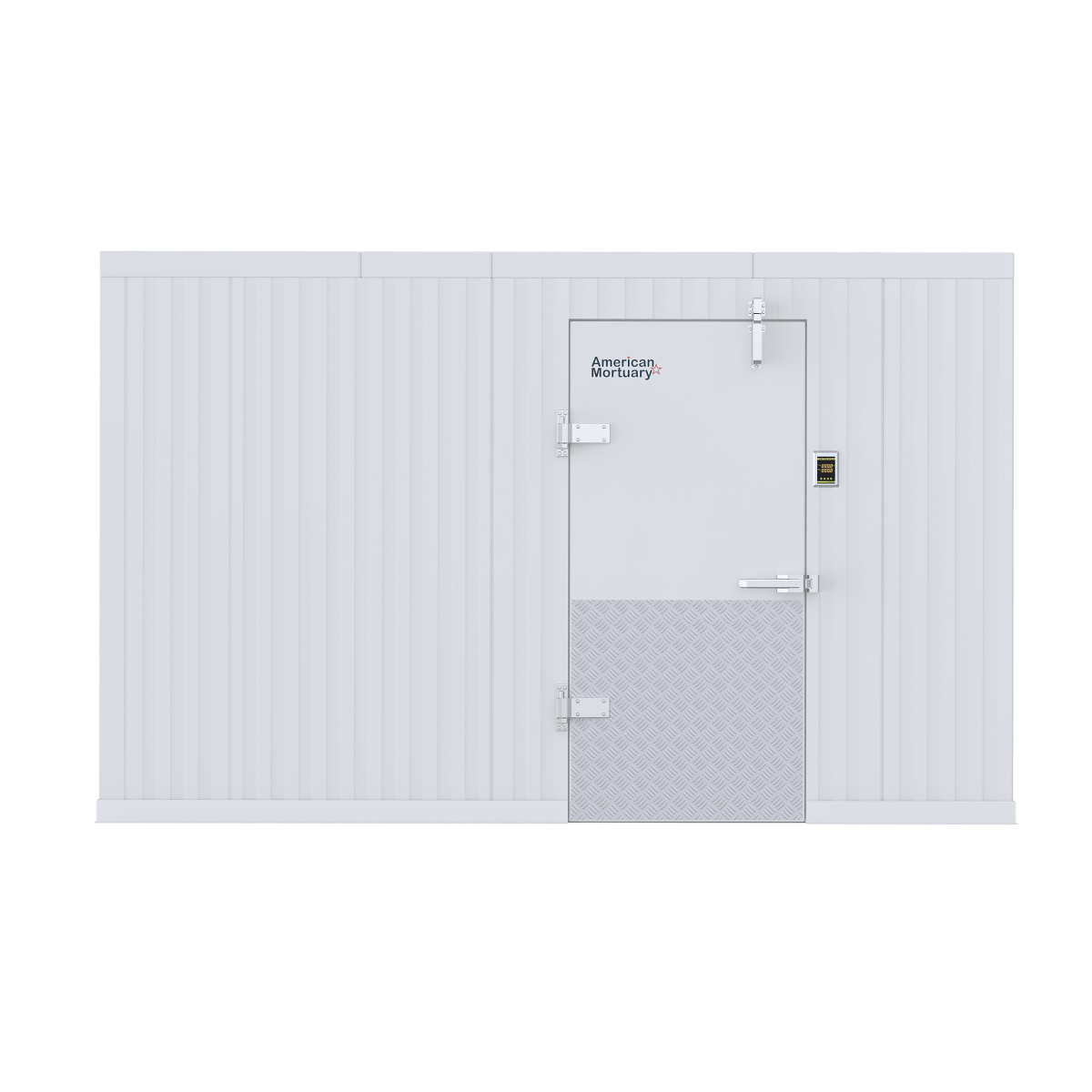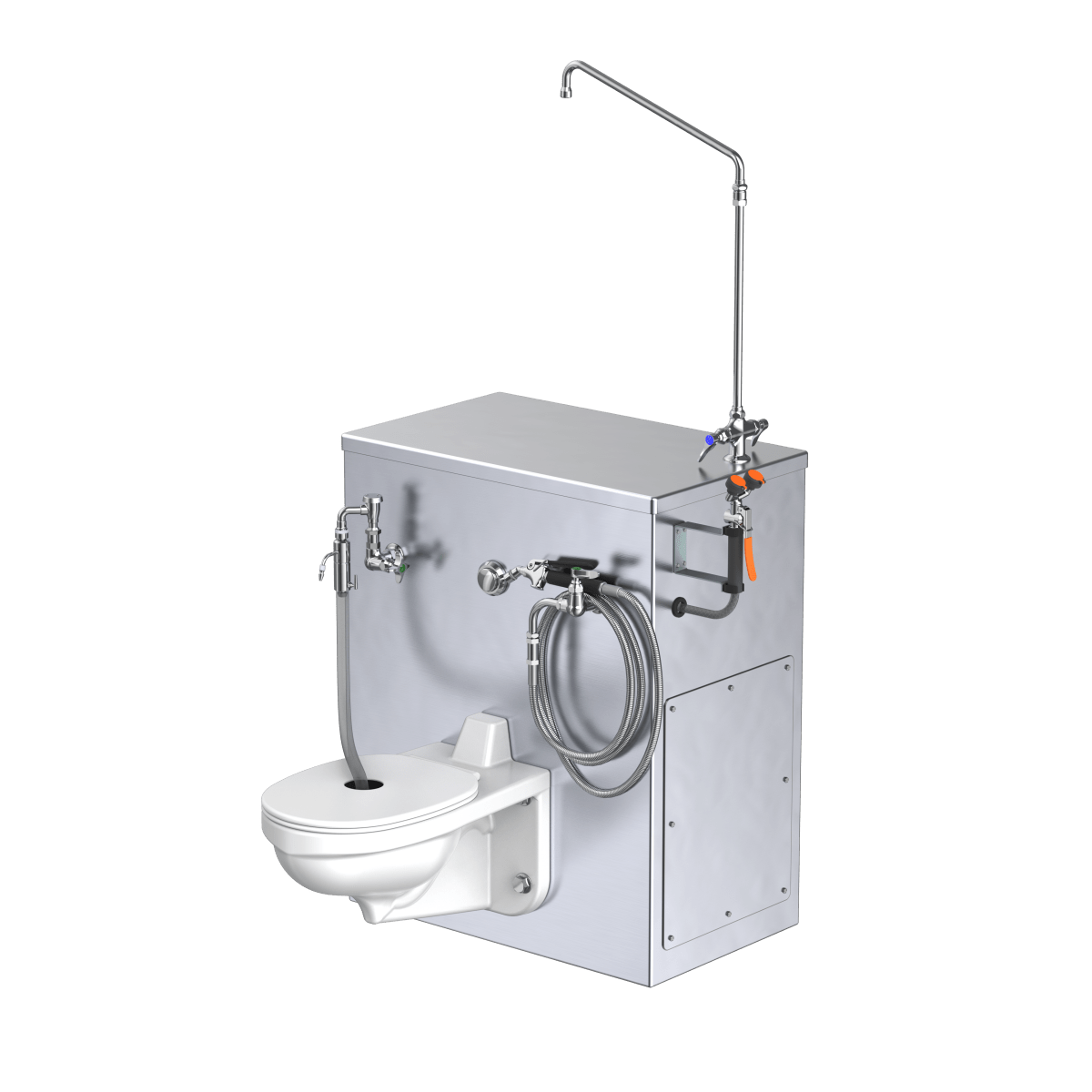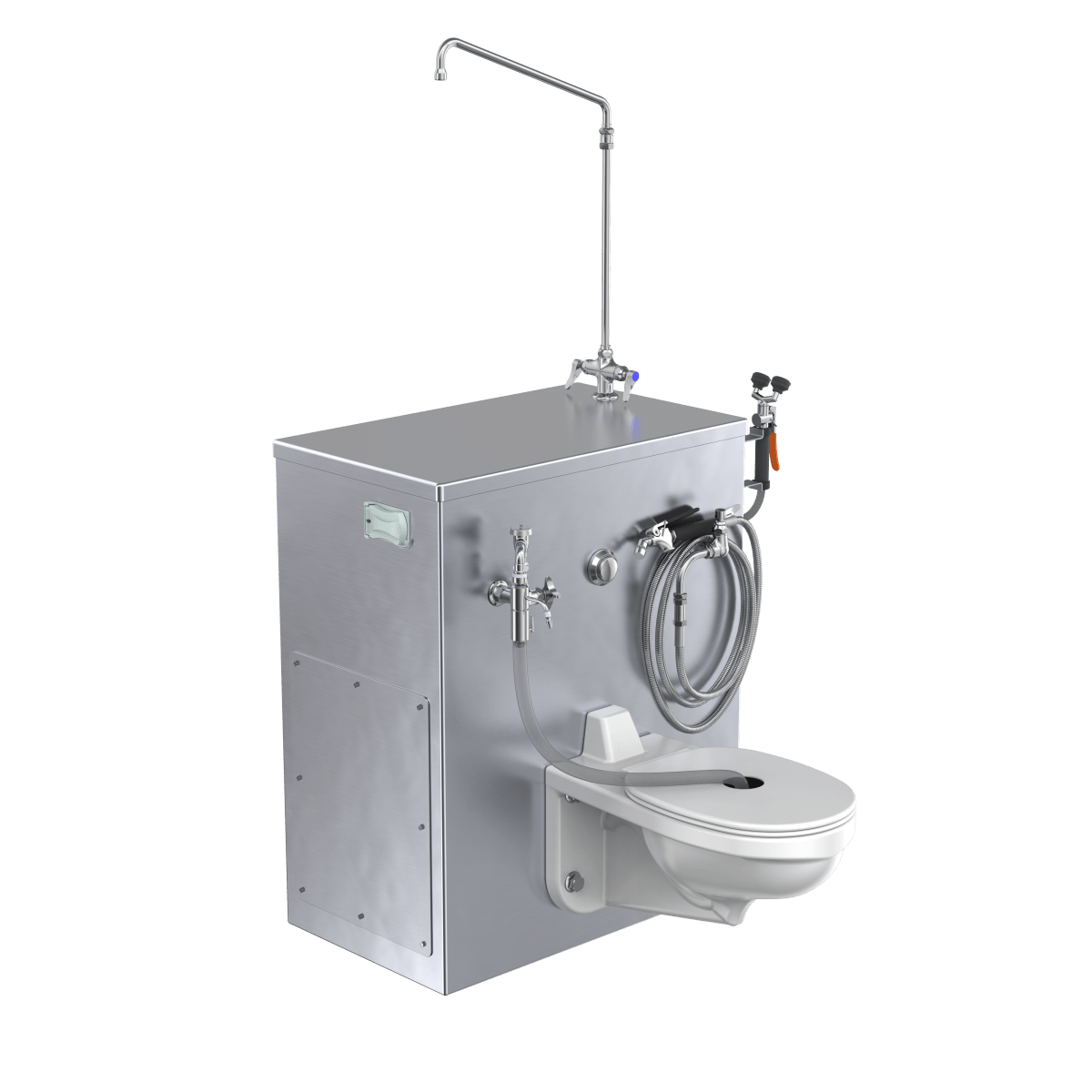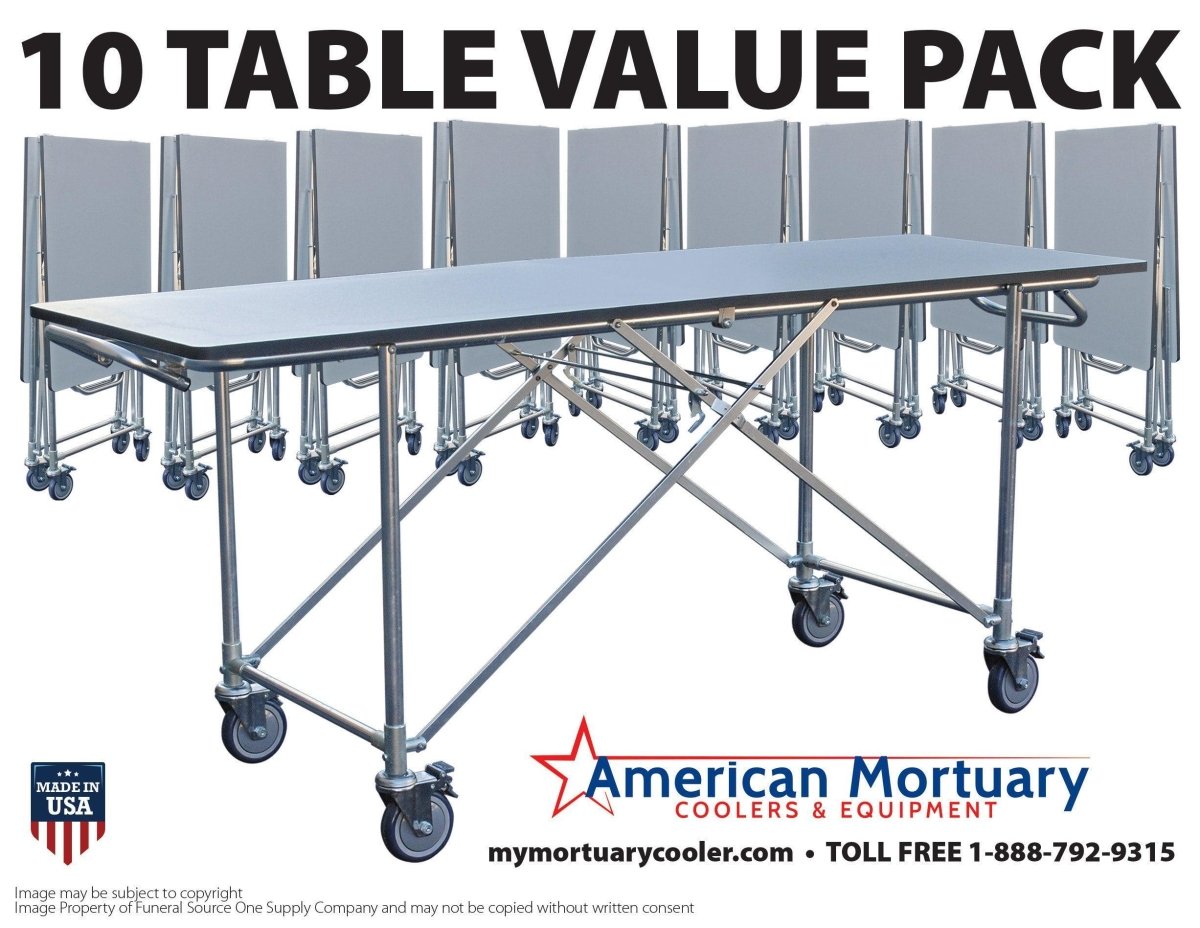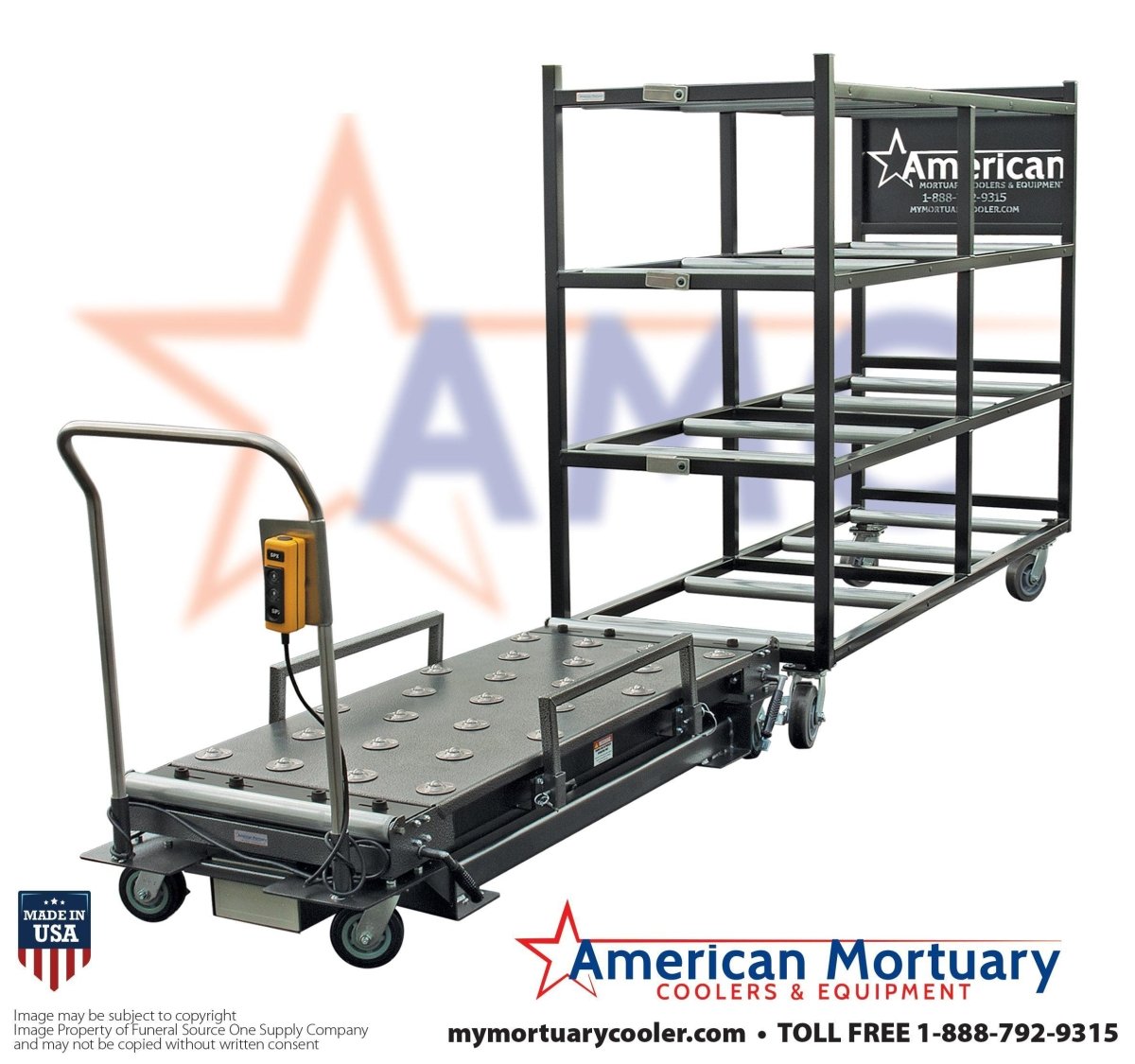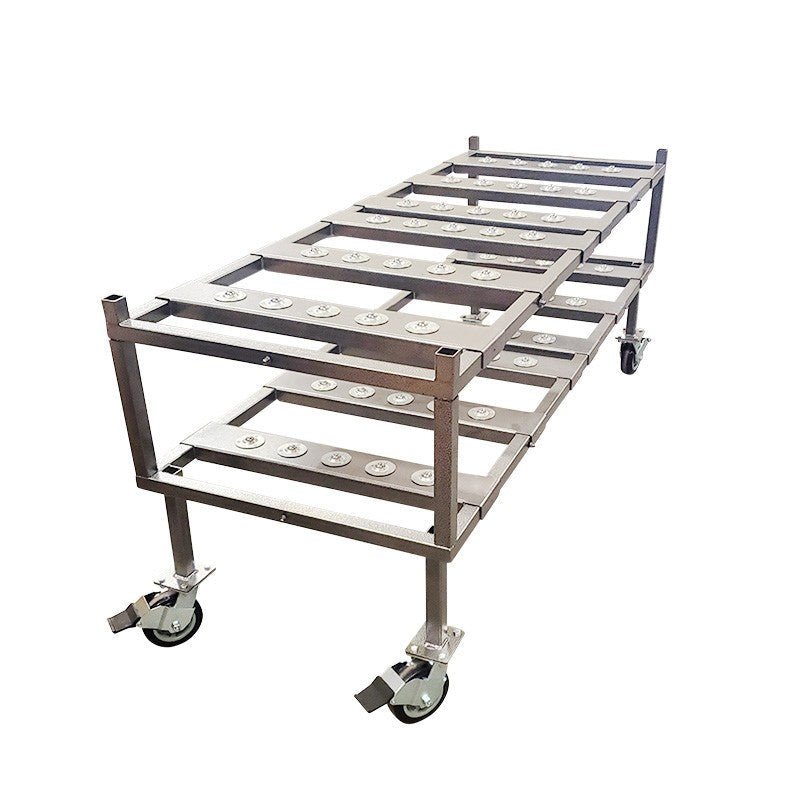Understanding Nature's Return: Human Composting Explained
Human composting is a question many funeral directors are beginning to hear from environmentally conscious families. Here's a quick answer:
Human Composting (Natural Organic Reduction): A legal, eco-friendly disposition method that transforms human remains into nutrient-rich soil through controlled decomposition in a specialized vessel with organic materials over 30-45 days. The process yields approximately one cubic yard of soil that families can use for planting or conservation.
| Human Composting Basics | Details |
|---|---|
| Also known as | Natural Organic Reduction, Terramation, Soil Change |
| Legal status | Available in 12 U.S. states as of 2024 |
| Process duration | 4-8 weeks (plus 3-5 weeks curing) |
| Average cost | $3,000-$7,000 |
| Environmental impact | Uses 87% less energy than traditional methods |
| Carbon savings | 1 metric ton CO₂ saved per body |
| End product | ~1 cubic yard of nutrient-rich soil (500-1,000 lbs) |
On May 1, 2020, Washington became the first state to legalize this innovative end-of-life option, and the movement has been growing steadily since. Unlike traditional burial or cremation, human composting mimics natural forest-floor decomposition but in a controlled, accelerated environment. The process combines the body with organic materials like wood chips, alfalfa, and straw in a vessel where microbes transform it into soil over several weeks.
For funeral directors, understanding this option means being able to offer families a truly sustainable choice that returns nutrients directly to the earth. The resulting soil can nourish gardens, forests, or conservation lands—creating a meaningful, regenerative legacy.
I'm with American Mortuary Coolers, a national-level mortuary cooler supplier with expertise in human composting and other innovative funeral industry solutions. Our experience with mortuary refrigeration solutions has given us unique insights into how funeral homes can adapt their infrastructure for emerging disposition methods.
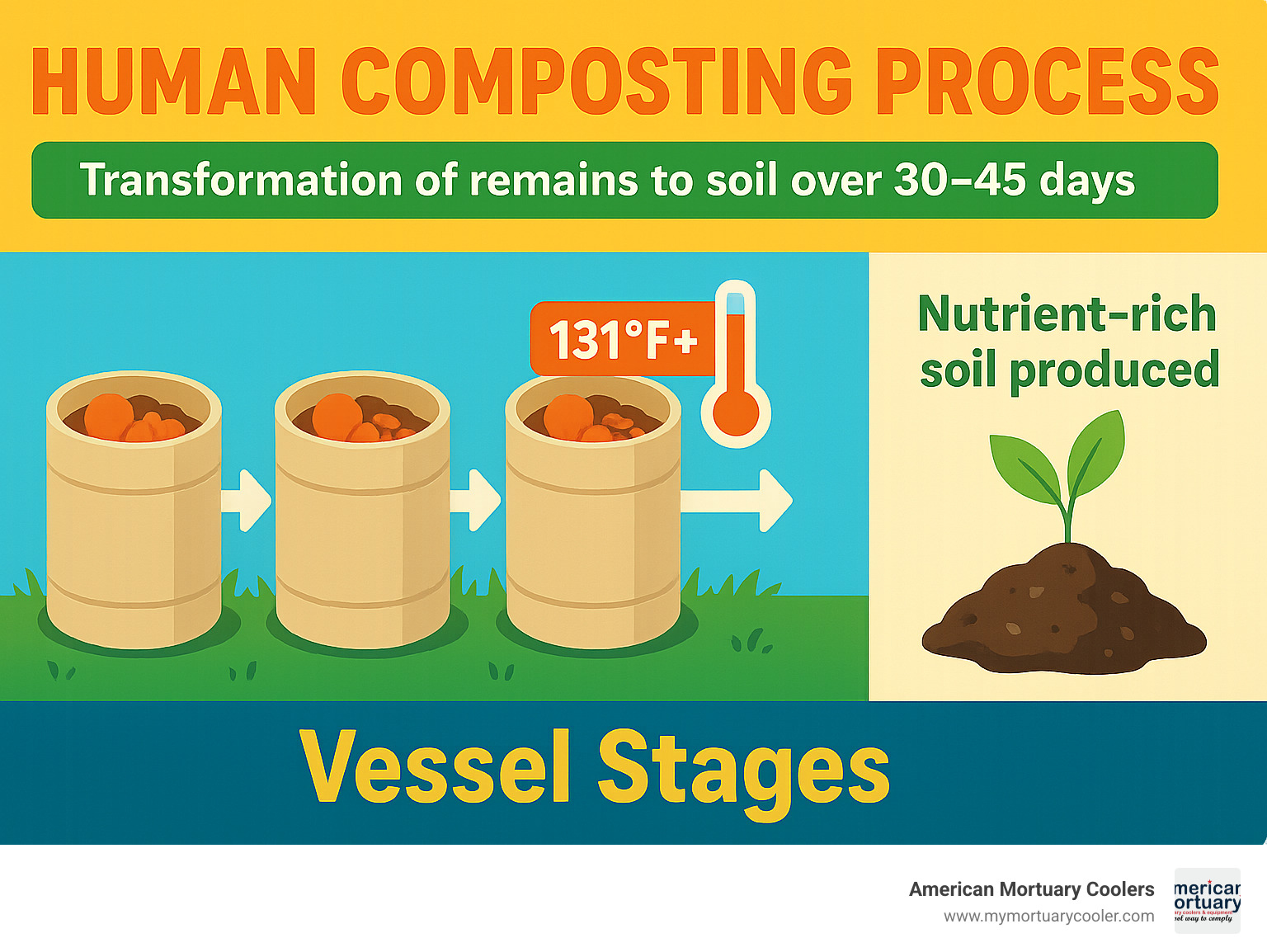
Human composting word roundup:
Why a Beginner's Guide Matters
The green burial movement is experiencing unprecedented growth. According to recent industry surveys, over 60% of Americans now express interest in eco-friendly funeral options—a dramatic increase from just a decade ago. This shift reflects growing awareness of traditional funeral practices' environmental impact and a desire to leave a positive legacy.
As death care professionals, understanding human composting positions you to meet this rising consumer demand. Families are increasingly seeking options that align with their environmental values, and those funeral homes prepared to offer and explain these alternatives will have a competitive advantage in the evolving marketplace.
What Is Human Composting?
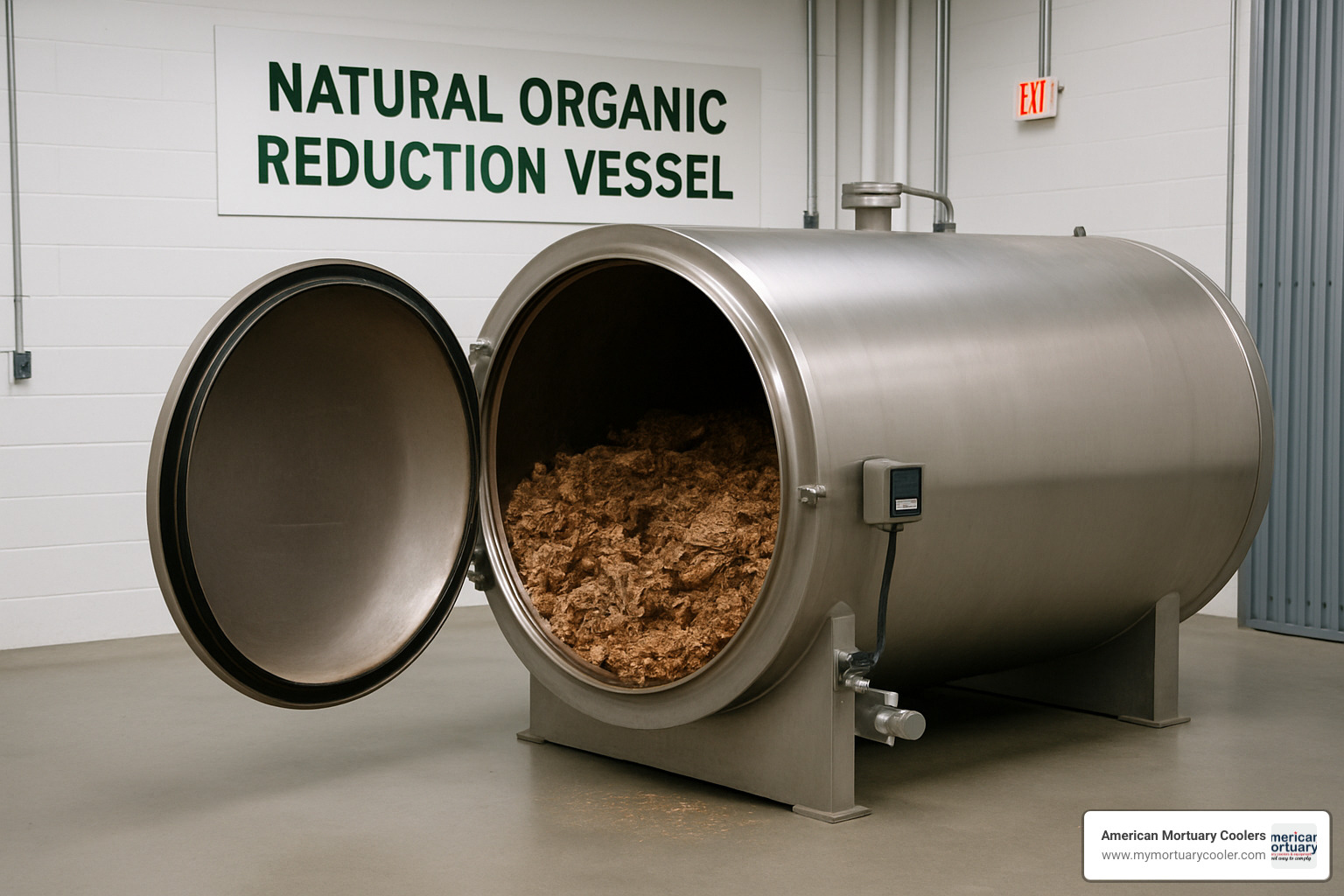
When families ask me about human composting, I explain it as nature's way of coming full circle. This process, officially called Natural Organic Reduction (NOR), transforms human remains into rich, life-giving soil through a gentle, dignified process.
Katrina Spade, the visionary who pioneered this method in 2011, describes it beautifully: "Natural organic reduction is defined as the contained, accelerated conversion of human remains to soil." Think of it as mimicking what happens naturally on the forest floor, but in a respectful, controlled environment that honors the deceased.
Unlike traditional options that either preserve bodies with chemicals or use significant energy for cremation, human composting offers something different – a chance to literally give back to the earth. Many families find deep comfort in knowing their loved one will nurture new growth, completing life's natural cycle in a meaningful way.
The science behind human composting is fascinating and has been thoroughly researched for safety and effectiveness. The process transforms remains into about one cubic yard of nutrient-rich soil – enough to plant several trees or nourish a garden for generations.
Core Principles of Human Composting
The magic of human composting happens through three key natural principles working in harmony:
First, there's the carbon-nitrogen balance – just like in your backyard compost pile. The human body provides nitrogen, while materials like wood chips and straw contribute carbon. The ideal ratio is about 25-30 parts carbon to 1 part nitrogen, creating the perfect recipe for change.
Second, microbial activity does the real work. These tiny decomposers – bacteria, fungi, and other microorganisms – thrive in the vessel's carefully controlled environment. They're nature's recyclers, breaking down organic matter efficiently and respectfully.
Third, optimal temperature is crucial for the process. The vessel maintains temperatures between 131-160°F for at least three consecutive days. This warmth not only speeds decomposition but also ensures any pathogens are eliminated, creating safe, clean soil.
Walt Richardson, a Washington funeral director who's guided many families through this choice, puts it simply: "When I explain human composting to families, I emphasize that it's not a new concept—it's how nature has recycled organic matter for billions of years. We're simply creating the optimal conditions for this natural process in a respectful, controlled setting."
Materials Needed: From Straw to Sensors
Creating the perfect environment for human composting requires thoughtfully selected materials and equipment:
The foundation is organic materials – wood chips, straw, and alfalfa surround the body, providing carbon, creating essential air pockets, and supporting those hardworking microbes. These simple, natural materials form the base of the change.
The vessel itself is typically a specialized steel cylinder, about 8 feet long and 4 feet tall. These containers are thoughtfully designed to maintain ideal conditions while allowing for rotation or mixing when needed.
Behind the scenes, monitoring equipment plays a vital role. Temperature probes track the warmth, oxygen sensors ensure proper airflow, and moisture meters help technicians maintain perfect conditions throughout. Some facilities even use custom HVAC systems to manage airflow and prevent any odors.
Throughout the process, bulking agents might be added to maintain the proper balance – adjusting moisture, carbon-nitrogen ratios, or enhancing microbial activity as needed.
As Lisa Carlson, author of "Final Rights: Reclaiming the American Way of Death," beautifully observes: "The beauty of this process is that it uses simple, natural materials to achieve something profound—the change of a human body into nutrient-rich soil that can sustain new life."
For those interested in learning more about this innovative approach, you can explore additional information about natural organic reduction here.
How the Human Composting Process Works: Step-by-Step
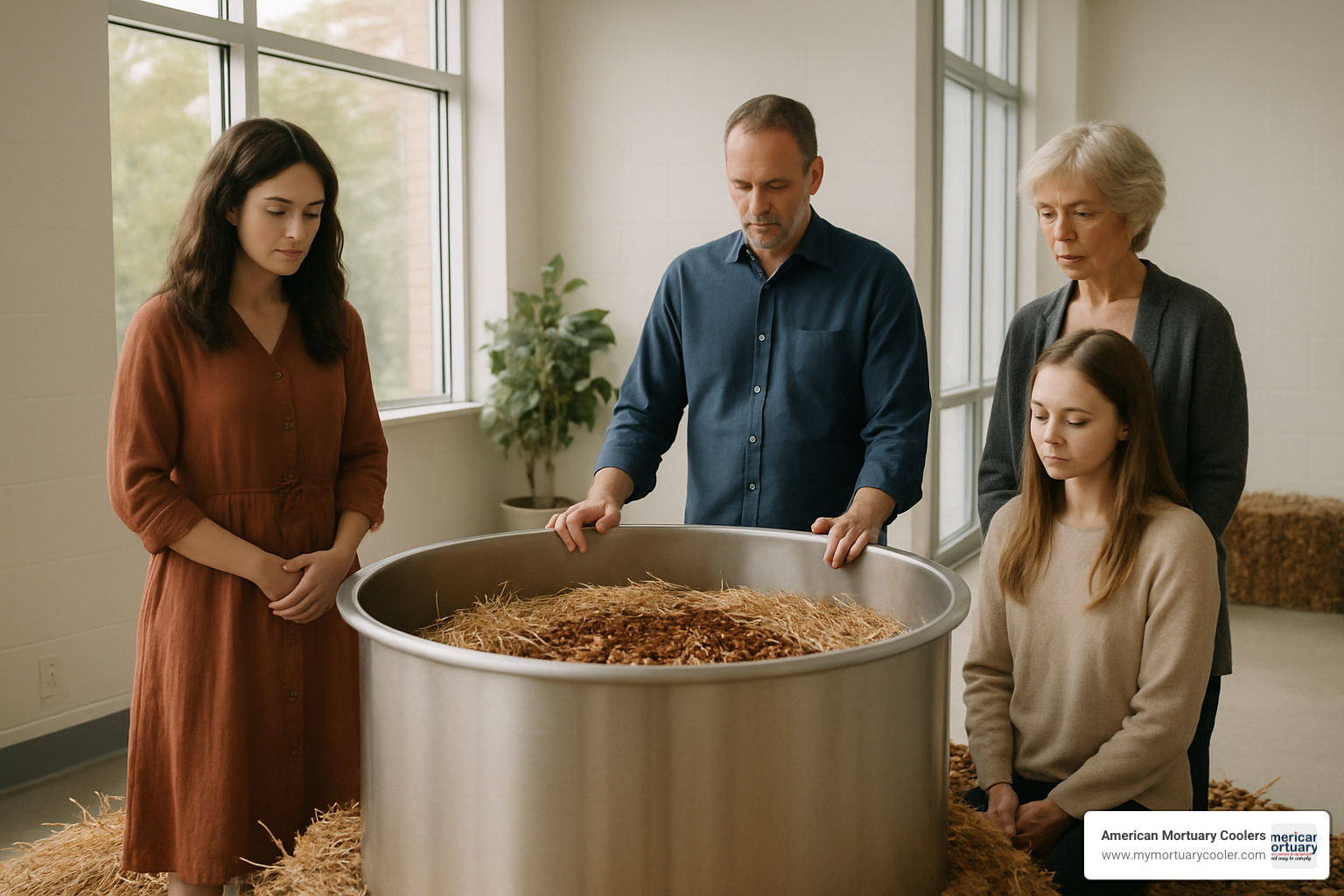
The journey of changing a loved one from body to soil follows a gentle, dignified path that honors both the person and the planet. This process typically spans 4-8 weeks of active change, followed by a few weeks of curing. Let me walk you through this remarkable transition with the care it deserves.
Step 1: Laying-In & Family Goodbye
The human composting journey begins with what many providers lovingly call a "laying-in" ceremony – a meaningful moment for families to say their goodbyes in a way that feels both ancient and revolutionary.
First, the body is tenderly washed and wrapped in a simple biodegradable shroud made of natural materials like organic cotton or wool. Unlike traditional preparation, this process skips embalming chemicals entirely, honoring the body in its natural state.
"When we wrapped my father in his favorite cotton blanket before placing him in the vessel, it felt like tucking him in one last time," shares Michael Reynolds, whose father chose human composting last year. "There was something deeply comforting about it."
Families often participate in placing their loved one in the vessel themselves, adding meaningful tokens – perhaps flowers from a home garden, handwritten notes, or pine cones from favorite hiking trails. Many facilities provide peaceful, thoughtfully designed spaces for this transition, allowing families to incorporate readings, music, or personal rituals that reflect their loved one's values.
For more insight into these ceremonies and family experiences, you can explore more information about natural organic reduction and how providers facilitate these meaningful goodbyes.
Step 2: Active Vessel Phase
Once the family has said their goodbyes, the technical yet beautiful process of change begins in earnest.
The body is gently covered with a carefully balanced mixture of wood chips, alfalfa, and straw. This isn't just any combination – it's a precisely calibrated recipe that provides the perfect carbon sources, structural support, and initial microbial populations to begin nature's work.
Temperature management becomes crucial as the vessel is sealed and natural microbial activity generates heat. Staff carefully monitor to ensure temperatures reach and maintain 131-160°F – warm enough to reduce pathogens and optimize decomposition, but not so hot as to kill beneficial microbes.
Oxygen flow is another key element that sets professional human composting apart from backyard composting. Technicians maintain aerobic (oxygen-rich) conditions throughout the vessel, which promotes efficient decomposition and prevents unpleasant odors.
Throughout this 30-45 day phase, some systems gently rotate or mix the contents, ensuring even decomposition and maintaining those crucial oxygen levels. This movement helps break up any compacted areas while facilitating the gradual softening of bones – a process that takes longer than soft tissue change but is essential for complete change.
"The system is completely sealed and vented through sophisticated biofilters," explains Jamie Peterson, operations director at a Washington-based facility. "This eliminates odors entirely, making the process undetectable outside the vessel."
During these weeks, nature performs its remarkable work. Proteins, fats, and carbohydrates break down into their component parts, returning to simpler forms that will eventually nourish new life.
Step 3: Curing, Screening & Soil Return
As active decomposition completes, the final phase prepares this new material for its return to the family and, ultimately, to the earth.
The transformed material moves to special curing bins where it continues to stabilize for an additional 3-5 weeks. This curing stage, similar to agricultural composting practices, ensures the final soil is mature, stable, and ready for its next purpose.
Technicians carefully screen the material to remove any remaining bone fragments, which are then ground into a fine powder and respectfully reincorporated. Non-organic items like medical implants, dental work, or artificial joints are removed during this process – nothing is wasted.
Before the soil leaves the facility, samples undergo testing for pathogens and heavy metals to ensure complete safety. The high temperatures maintained throughout the process effectively eliminate harmful bacteria, creating soil that's not just safe but vibrant with possibility.
The final result is truly remarkable – approximately one cubic yard of nutrient-rich soil weighing between 500-1,000 pounds. This isn't just dirt; it's a living legacy with approximately 2% nitrogen, 1% phosphorus, and 1% potassium – comparable to premium commercial topsoil.
Families typically receive about one-third of this soil, with many creative options for its use. Some plant memorial trees, others spread it in meaningful gardens or donate it to conservation projects. Each choice becomes another chapter in their loved one's continuing story.
"When we used Mom's soil to plant her favorite magnolia tree in our backyard," shares Sarah Thompson, "it felt like she was still with us, still growing and giving beauty to the world. Watching that tree bloom each spring brings us so much peace."
Environmental Impact, Safety, and Cost Comparison
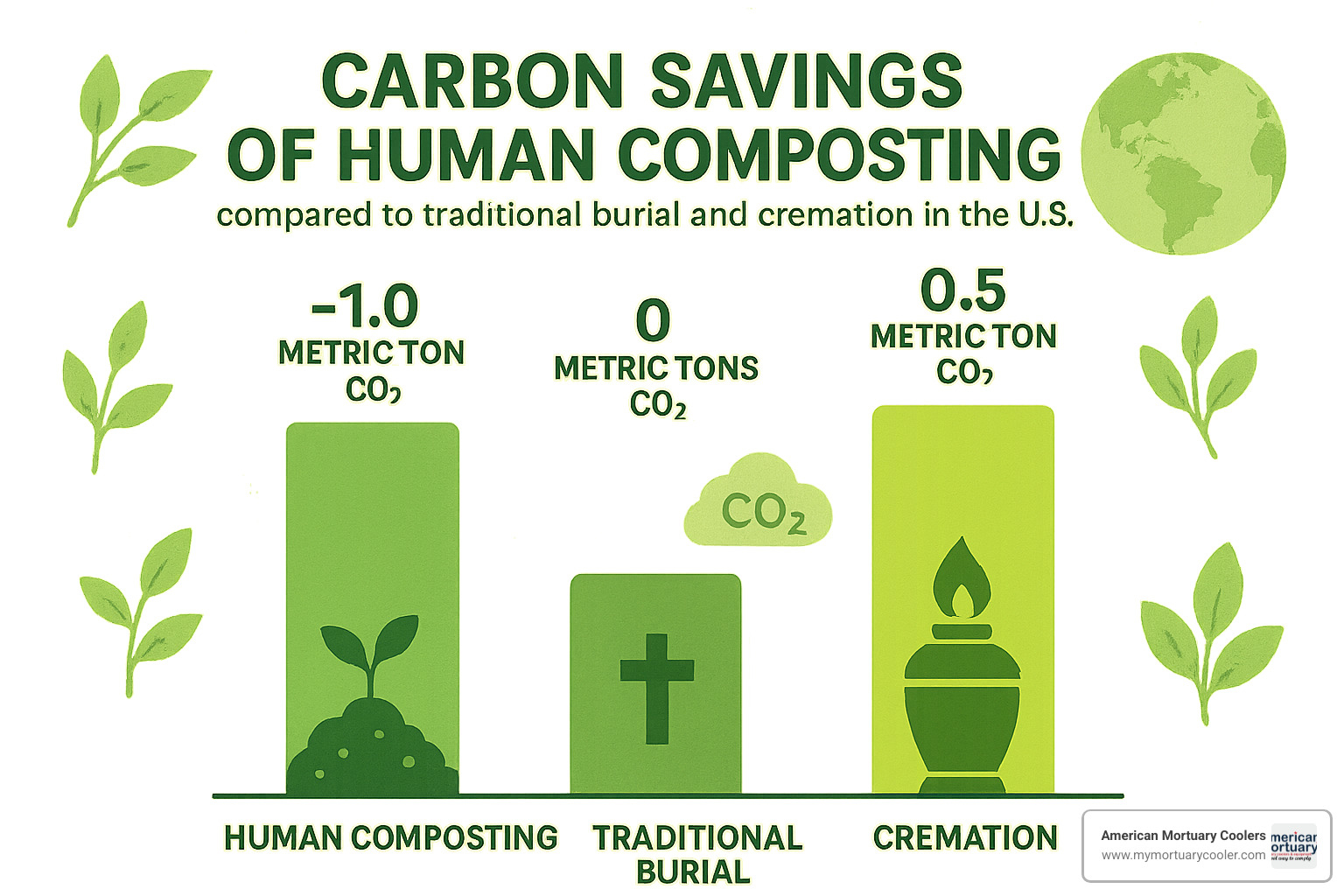
When families ask about human composting, they're often curious about how it stacks up against traditional options. Let's look at the full picture - from environmental benefits to what it means for your wallet.
| Disposition Method | Average Cost | CO₂ Impact | Land Use | Chemical Use |
|---|---|---|---|---|
| Traditional Burial | $8,300+ | High | 1 plot + casket materials | Embalming fluids, vault |
| Cremation | $6,000+ | 600 lbs CO₂ per body | Minimal | Combustion emissions |
| Human Composting | $5,000-$7,000 | Carbon neutral/negative | None (creates soil) | None |
Carbon & Resource Savings
The earth-friendly benefits of human composting are pretty remarkable when you look at the numbers.
Each body that undergoes composting instead of traditional methods saves about 1 metric ton of carbon dioxide. That's like taking a car off the road for 2,481 miles! The process is incredibly energy-efficient too, using 87% less energy than firing up a cremation chamber or manufacturing and burying a casket.
"When families understand the environmental math, many find it compelling," says Emily Adams, an environmental scientist who studies sustainable death care. "It's not just avoiding harm—it's actively doing good for the planet."
Traditional burial practices use over 800,000 gallons of embalming chemicals annually—chemicals that eventually make their way into our soil and water. Human composting uses zero toxic chemicals, creating a truly natural return.
The soil benefits are substantial too. That cubic yard of rich earth from human composting can help retain an additional 20,000 gallons of water per acre when added to land—a huge plus in drought-prone areas. And unlike traditional burials that permanently consume land (about 4 million acres of forest for caskets each year), human composting actually creates usable, life-giving soil.
There's also the mercury factor. Cremation releases mercury from dental fillings into the air—about 320 pounds annually across the U.S., according to EPA estimates. Human composting produces no mercury emissions whatsoever. For more details on these emissions, check out the latest research on mercury emissions from the World Health Organization.
Price Tag Reality
Money matters when making end-of-life decisions, and human composting offers some surprising financial benefits.
The typical cost for human composting runs between $5,000-$7,000. This might initially seem comparable to cremation (averaging $6,000-$7,000 with services) and less than traditional burial (median $8,300 plus cemetery costs).
But here's the difference: that human composting price is typically all-inclusive. There's no need to purchase a cemetery plot ($2,000-$5,000), a burial vault ($1,000-$4,000), or a headstone ($1,000-$3,000). When you add up all these extras for traditional burial, you're often looking at $13,000-$18,000 total.
Robert Jensen, a funeral director who recently added human composting to his offerings, puts it plainly: "Families are often relieved to learn there are no hidden costs with composting. Plus, they receive something tangible—soil they can use meaningfully—rather than just paying for disposal."
Many providers also offer payment plans to make the service more accessible. For those interested in exploring more eco-friendly options that might fit different budgets, you can read A Comprehensive Guide to Eco-Friendly Funeral Options for alternatives.
The environmental savings combined with the straightforward pricing make human composting an increasingly attractive option for families looking to honor their loved ones while honoring the planet too.
Legal Landscape, Providers & Planning Ahead
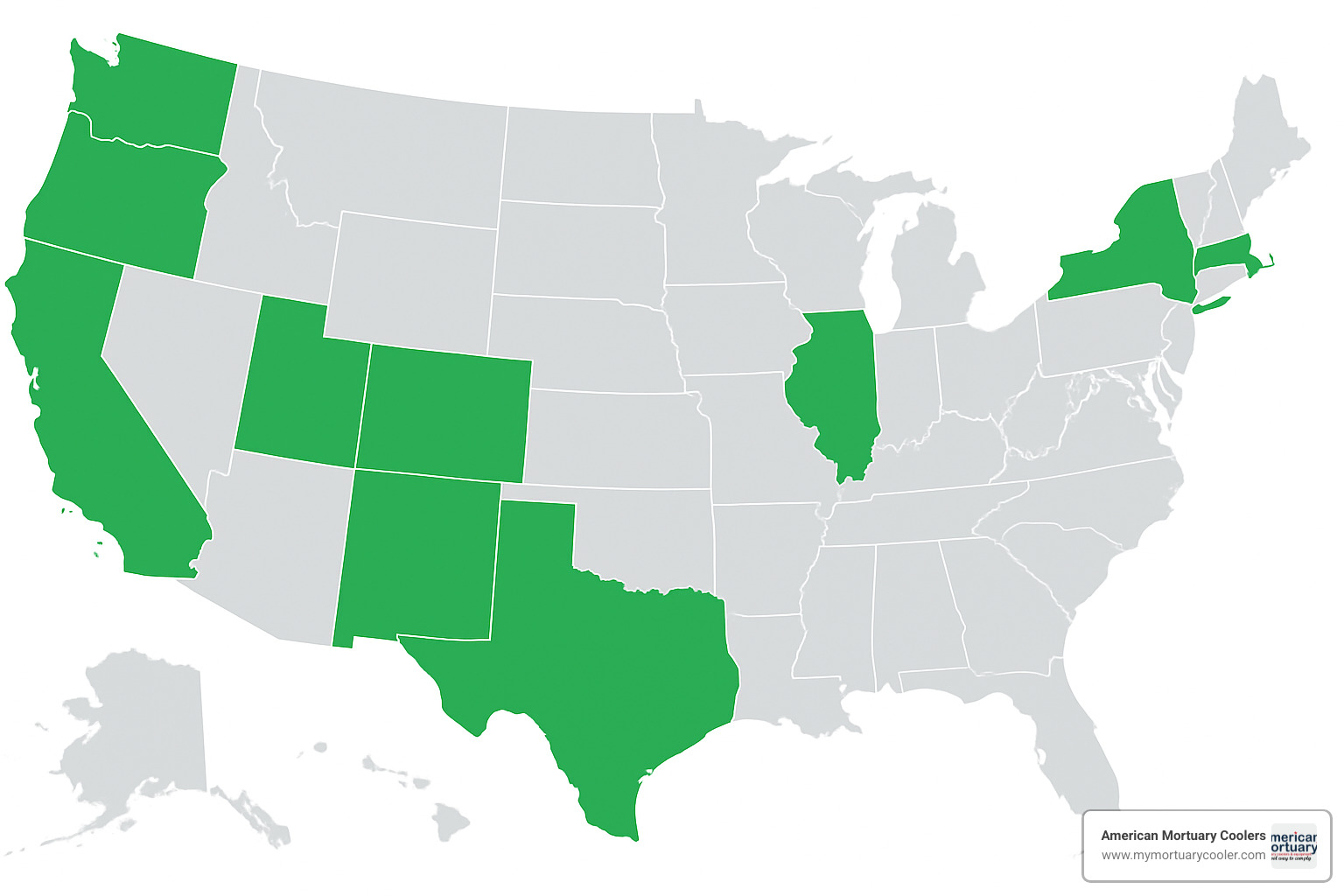
When families ask about human composting, understanding the legal landscape is essential before proceeding with any arrangements. The good news is that this eco-friendly option is becoming increasingly accessible across America.
Where It's Legal in 2024
As of August 2024, human composting has gained legal status in 12 U.S. states, with Washington leading the charge as the first to legalize it in 2019. The green burial revolution has since spread to Colorado, Oregon, Vermont, California, New York, Nevada, Arizona, Maryland, Delaware, Maine, and Minnesota.
"I'm amazed at how quickly states are embracing this option," says Maria Chen, a funeral director in Oregon. "Five years ago, most legislators had never even heard of the concept. Now we're seeing new bills introduced almost monthly."
Several additional states have legislation in the pipeline, with bipartisan support growing as lawmakers recognize both the environmental benefits and the importance of expanding end-of-life choices. If you're curious about pending legislation in your state, the Earth Funeral legislative tracker provides real-time updates on bills making their way through various state houses.
Each state has crafted its own regulatory framework. Some prohibit using the soil for growing food crops, while others have specific requirements for facility licensing and staff training. For the most current information about your state's regulations, check out Human Composting, Mortuary Coolers, Racks, Lifts: 12 States.
Choosing Providers for Human Composting
The provider landscape is growing alongside legal expansion, with several established companies now offering human composting services:
Recompose, founded by industry pioneer Katrina Spade, operates near Seattle with custom-designed vessels in a community-oriented space. Their approach emphasizes both environmental science and meaningful ceremony.
Return Home in Washington state offers a 60-day process with 30 days of active composting followed by 30 days of curing. They place special emphasis on family involvement throughout the journey.
Earth Funeral, with locations in both Washington and Colorado, has made a name for itself by donating portions of soil to conservation projects and maintaining transparent pricing structures.
Herland Forest takes a unique approach as a natural burial cemetery in Washington that also offers human composting in a beautiful forest setting.
When helping families select a provider, I always suggest considering practical factors like location (is transportation needed?), process details (timeline and materials used), opportunities for family involvement, soil return options, and of course, pricing and payment flexibility. Many providers now partner with funeral homes across their state, allowing local funeral directors to offer the service even without operating the composting facility themselves.
"We chose Return Home because they allowed our whole family to participate in the laying-in ceremony," shares Thomas Rodriguez, who arranged his mother's composting last year. "Having that hands-on experience of placing flowers and meaningful items with Mom made all the difference in our grief journey."
Religious & Cultural Perspectives
The religious and cultural reception to human composting varies considerably across traditions:
The Catholic Church has formally opposed the practice, with the U.S. Conference of Catholic Bishops stating it doesn't show proper "respect and reverence for the deceased." This stance mirrors early Catholic opposition to cremation, which the Church eventually came to accept.
Most Protestant denominations haven't issued official positions, leaving decisions to individual congregations and members. Many progressive Protestant communities have acceptd the option for its environmental benefits.
Within Judaism, perspectives vary widely. Some Reform and Reconstructionist rabbis support the practice as aligned with the principle of "dust to dust," while more traditional communities maintain concerns about proper burial.
Islamic traditions typically call for prompt burial without cremation, though some Muslim scholars have begun examining human composting through the lens of environmental stewardship principles found in Islamic teachings.
Buddhist and Hindu traditions, which already accept cremation, often find natural alignment with the cyclical principles emphasized in human composting.
Many Indigenous perspectives emphasize returning to the earth and may find resonance with human composting, though specific practices and beliefs vary widely among different cultures.
Those with secular, humanist, or earth-centered spiritual beliefs often find human composting particularly meaningful as it emphasizes connection to natural cycles and environmental care.
Rabbi Adina Lewittes, who studies emerging death care options, beautifully observes: "What we're seeing is a reconsideration of ancient wisdom about our relationship with the earth. Many traditions have teachings about returning to the earth—human composting offers a modern expression of that timeless concept."
Pre-Planning & Memorial Ideas
For those interested in human composting, advance planning ensures wishes are honored while reducing family stress during an already difficult time.
Document your wishes clearly in advance directives, wills, or pre-need funeral arrangements. Many providers offer prepaid plans that lock in current pricing and ensure arrangements are in place when needed. Having open conversations with loved ones about your preferences helps prepare them and prevents confusion when the time comes.
The resulting soil opens up creative memorial possibilities that traditional options simply can't match. Many families plant memorial trees that grow and change over time—living monuments that provide shade, beauty, and habitat for generations. Others contribute soil to community gardens or parks, creating shared spaces of remembrance that benefit entire neighborhoods.
Conservation-minded families might donate soil to reforestation or habitat restoration projects, supporting environmental healing while honoring their loved one's legacy. Some families divide the soil among relatives, allowing each person to create their own meaningful memorial in their gardens or special places.
For those wishing to keep some soil at home, breathable containers are recommended rather than sealed urns to maintain soil health. For beautiful options that honor both the person and the planet, check out Ashes to Earth: The Complete Guide to Biodegradable Urns.
Jennifer Martinez, whose father chose human composting last year, shares her family's experience: "We used Dad's soil to plant his favorite dogwood tree in our backyard. Every spring when it blooms, we feel his presence. It's been a much more meaningful connection than visiting a cemetery plot would have been—the tree is alive and beautiful, just like his memory."
For more comprehensive information about planning ahead for eco-friendly arrangements, explore A Comprehensive Guide to Eco-Friendly Funeral Options.
Conclusion & Next Steps
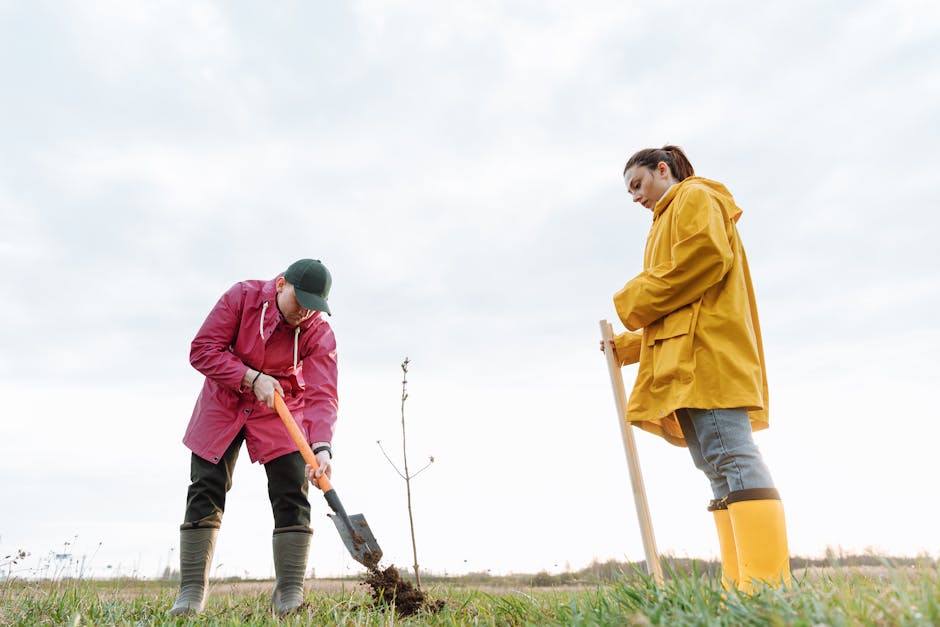
Throughout our journey exploring human composting, we've seen how this innovative approach bridges ancient wisdom with modern science to create something truly special in death care. Like watching a forest regenerate after winter, there's something deeply comforting about this return to natural cycles.
Human composting isn't just another funeral option—it's a profound shift in how we think about our final impact. The soil created doesn't just represent an ending, but a beginning: nutrients returning to nourish new life, memories taking physical form in growing things, and grief finding healing through connection with nature.
"When my mother's soil helped grow her favorite roses," shares Elaine from Oregon, "I felt her presence in a way I never expected. Watching those first blooms open felt like she was still participating in the world she loved."
For funeral professionals, this emerging option represents both challenge and opportunity. As more families seek alternatives that align with their environmental values, those prepared to guide them through these choices will build deeper community connections. The ability to explain human composting clearly and compassionately is becoming an essential skill in modern funeral service.
Here at American Mortuary Coolers, we understand that the funeral industry is changing rapidly. While our focus remains providing durable, custom mortuary refrigeration solutions nationwide, we're committed to supporting funeral homes through all industry evolutions. Our team from New York to Los Angeles recognizes that today's funeral providers need versatile infrastructure that works for both traditional services and newer options like human composting.
For those wanting to explore this option further, consider:
Connecting with established providers in states where it's legal, staying informed about legislation in your region through resources like the Earth Funeral tracker, gauging local interest with gentle conversations, and preparing your team with thoughtful education about the process.
"The most surprising thing," one funeral director told us, "wasn't how many families chose composting once we offered it—it was how many expressed gratitude just for having the conversation, even if they ultimately chose something else."
Whether human composting becomes central to your offerings or simply something you can discuss knowledgeably, understanding this approach helps ensure you're truly serving your community's evolving needs. After all, at the heart of great funeral service is the ability to help families find meaning during life's most difficult transition—something that connects us across all funeral traditions.
For more information about mortuary equipment that supports various disposition methods, explore our guide to mortuary coolers designed to provide the infrastructure flexibility modern funeral homes need.


